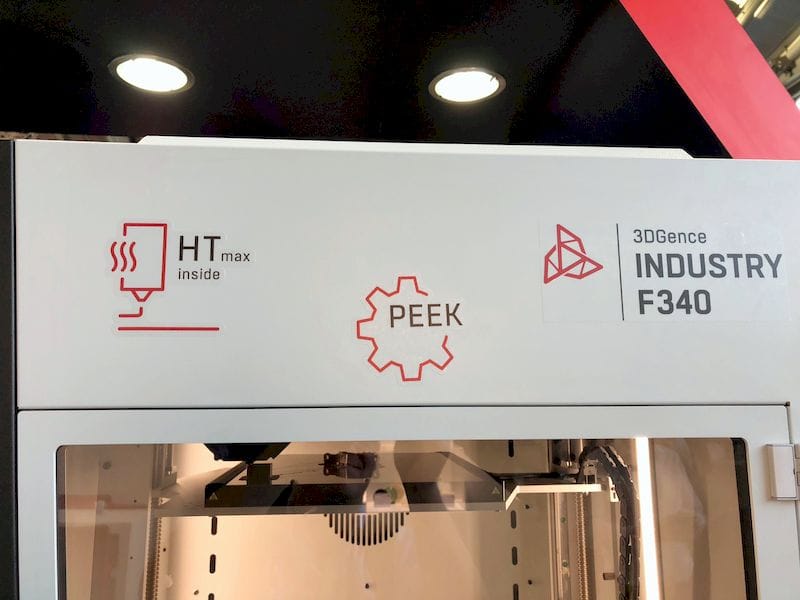
There are several high-temperature 3D printers emerging, and one is 3DGENCE’s F340.
High temperature 3D printers are growing in prominence because of the interest in engineering materials, which typically require much higher temperatures to extrude than the more common ABS and especially PLA, which can literally slump if sitting on a car dashboard in the summer – which explains why engineering materials are more desirable.
But 3D printing higher temperature materials is not merely a case of raising the temperature of the hot end, although that is certainly required.
If you raise the hot end temperature, there is a bit of a chain reaction, where other nearby components are also heated significantly. This means in some cases a major changeout of other components to materials that can withstand the higher temperature and still perform adequately. In most cases, this means metal components.
Another factor in high temperature 3D printing is the requirement for a heated build chamber. Many higher temperature materials tend to warp when exposed to the differential temperatures of ambient room to extrusion. To counteract this, you must first completely enclose the build volume from ambient air, and secondly heat it significantly to a point where warping does not occur.
These and many other factors have been incorporated into Poland-based 3DGENCE’s new F340 professional 3D printer system, which is capable of 3D printing many desirable engineering materials, including PEEK.
While some heated chambers draw their heat from indirect sources such as the heated print surface or even the hot end itself, 3DGENCE has incorporated actual heaters that actively provide warmth for their 260 x 300 x 340mm build chamber.
3DGENCE explains that they normally run the build chamber temperature at 85C, but it can be raised to as high as 95C if required.
Their hot end can hit a startling 500C, making it suitable for 3D printing a wide variety of materials, including Nylon and PEEK. However, we’re also told they must “unlock” the machine for certain materials.
Nevertheless, the F340 includes a modular design that employs what they call “print engines”, each with different thermal capabilities. Currently they offer three modules:
- PRO Module (190-265C) for ABS, PLA, PET, Nylon, BVOH, HIPS
- HT Module (265-340C) for PC, PC-ABS,PC-ESD
- HTmax Module (340-500C) for PEEK
The system includes dual nozzles for the ability to 3D print support material, but uses an unusual approach. The “other” nozzle lifts when not in use to avoid interference with the 3D model being printed, but there is also a small metal plate that covers that nozzle to completely avoid drips. Good idea!
Machine calibration is stored on each module, and is reused for subsequent prints.
The F340 is desktop-sized itself, but comes with a stand and power unit upon which it sits.
The F340 is an open materials machine, meaning you can use 3D printer filament from any source. However, as you might expect, you must provide a suitable print profile to achieve good results. 3DGENCE will provide such profiles when they have developed them, explaining to us that they release the profile when they’ve obtained good results.
From what we can tell, this is a relatively powerful professional 3D printer that is capable of producing engineering prototypes in several useful materials. Priced at €17,500 (USD$21,500) it is at a level below some other high temperature options.
Via 3DGENCE

